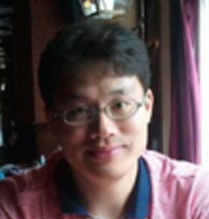| 일 | 월 | 화 | 수 | 목 | 금 | 토 |
|---|---|---|---|---|---|---|
| 1 | 2 | 3 | 4 | 5 | ||
| 6 | 7 | 8 | 9 | 10 | 11 | 12 |
| 13 | 14 | 15 | 16 | 17 | 18 | 19 |
| 20 | 21 | 22 | 23 | 24 | 25 | 26 |
| 27 | 28 | 29 | 30 |
- 빅데이타
- No SQL
- 김양재 목사
- 김양재 목사님
- 확률
- 몽고디비
- 인공지능
- node.js
- c++
- Machine Learning
- 딥러닝
- 데이터 과학
- WebGL
- openCV
- 빅데이터
- 빅 데이터
- R
- probability
- Deep learning
- nodeJS
- 김양재
- Statistics
- 우리들교회
- MongoDB
- 빅 데이타
- 주일설교
- Artificial Intelligence
- data science
- Big Data
- 통계
- Today
- Total
Scientific Computing & Data Science
[Acoustics / Ultrasound] Introduction to Ultrasound 본문
Introduction
Dr.Karl Theo Dussik, an Austrian neurologist, was the first to apply ultrasound as a medical diagnostic tool to image the brain
Advantages
Portable
Free of radiation risk
Relatively inexpensive compared with other imaging modalities such as MRI, CT, etc.
Tomographic (cross-sectional view of anatomical structures)
Images can be acquired in real-time
B-Mode Ultrasound
Pulse-echo approach with B-Mode(Brightness-Mode) display
Transmitting small pulses of ultrasound echo from a transducer into the body
As the ultrasound waves penetrate the body tissue of different acoustic impedances along the path of transmission, some reflected back to the transducer and some continue to penetrate deeper
The echo signals returned from many sequential coplanar pulses are processed and combined to generate an image
Generation of Ultrasound Pulses
Transducers contain multiple piezoeletric crystals
Piezoeletric crystals are inter-connected electronically and vibrate in response to an applied electric current
Pielzoelectric effect: mechanical vibration(stress) to electric charge
Reverse piezoelectric effect: electrical signal to mechanical vibration
Procedures
Piezoelectric crystals in transducer of scan head produce pulses of ultrasound
Transmission through tissue medium
Reflection from tissue interfaces
Signal(echoes) return to the system > electrical signal (reverse piezeoelectric effect)
Signal processing : electrical signal to monitor / imaging of all reflections formed on the monitor
Ultrasound Wavelength & Frequency
The upper limit of sound frequency for audible human hearing: 20 kHz
Medical devices use sound waves: 1 - 20 MHz
High-frequency ultrasound waves
10 - 15 MHz
Short wavelength
High axial resolution
Accurately discriminate between two separate structures along the axial plane of wave propagation
More attenuated than lower frequency waves
Suitable for imaging mainly superficial structures
Low-frequency ultrasound waves
2- 5 MHz
Images of lower resolution
Penetrate to deeper structures due to a lower degree of attenuation
[Fig 1.] Attenuation of ultrasound waves and it relationship to wave frequency.
[Fig 2.] A comparison of the resolution and penetration of different ultrasound transducer frequencies.
[Fig 3.] Schematic representation of ultrasound pulse generation.
* PRF: Pulse Repetition Frequency, the number of pulses emitted by the transducer per unit of time. PRF for medical imaging devices ranges from 1 to 10 kHz.
Ultrasound-Tissue Interaction
Type of interactions
Reflection
Scatter
Absoprtion: transformed into heat (increase in temperature)
Refraction
Acoustic impedance
Intrinsic physical property of a medium
Density of medium times the velocity of ultrasound wave propagation in the medium (ρ*c)
Intensity of reflected echo
Difference in acoustic impedances between two mediums
Reflection
Specular reflection: Sound energy is reflected back to the transducer
Echo intensity generated is proportional to the acoustic impedance gradient between the two mediums
Refraction
Change in the direction of sound transmission after hitting an interface of two tissues with different speeds of sound transmission
Frequency is kept constant, wavelength must change
One of the most important causes of incorrect localization of a structure
Refraction artifacts are most prominent at fat/soft tissue interfaces
Speed of sound is low in fat: approx. 1,450 m/s
Speed of sound is high in soft tissues: approx. 1,540 m/s
Scatter
Ultrasound pulse encounters
reflectors whose dimensions are smaller than the ultrasound wavelength
Rough, irregular tissue interface
Some echoes return to the transducer regardless of the angle of the incident pulse
Appeared as tiny speckels
Recent Innovations in B-Mode Ultrasound
Tissue harmonic imaging
First observed in work geared toward imaging of ultrasound contrast materials
Harmonic: Frequencies integral multiples of the frequency of the transmitted pulse (fundamental frequency or first harmonic)
Second harmonic: Frequency of twice the fundamental
An an ultrasound travels through tissues, the shape of the original wave is distorted from a perfect sinusoid to a "sharper," more peaked, sawtooth shape
Reflected echoes of several different frequencies, of many higher order harmonics
Used for the reduction of artifacts and clutter in near surface tissues
Spatial compound imaging (Multi-beam imaging)
Electronic steering of ultrasound beams from an array of transducer
To image the same tissue multiple times by using parallel beams oriented along different directions
Echoes from the different directions are averaged together into a single composite image
Results in averaging out speckles, less "grainy", increasing the lateral resolution
'Acoustics' 카테고리의 다른 글
| [Acoustics / Theory] Fundamentals / Momentum Conservation (0) | 2016.07.16 |
|---|---|
| [Acoustics / Theory] Fundamentals / Mass Conservation (0) | 2016.07.16 |
| [Acoustics / Theory] Plane Sound Waves (0) | 2014.06.12 |
| [Acoustics / Theory] Fundamental Concepts (0) | 2014.06.12 |
| [Acoustic/Application] High-Intensity Focused Ultrasound (HIFU) (0) | 2014.06.06 |






